Some days I drive over to Staten Island. We live close to the Verrazzano-Narrows Bridge that leads to the borough and, since we have E-Zpass, I don’t consider I’m paying its exorbitant toll which is one reason why people have a bad opinion about the borough. Also, there’s the abhorrent traffic on the Staten Island Expressway: The Geneva Convention probably has a rule against it. But I drive over anyway and avoid the expressway completely by taking the first exit. This leads to Fort Wadsworth, established by the British in 1779, making it one of the oldest in the country. You can still walk around its battlements, but I’m headed to the back roads along the south shore. My favorite road is the twisty two-lane Arthur Kill Road. Up until the mid-20th century, it cut through farmland growing fruits and vegetables for the city. Then, fumes from smelt plants on the New Jersey side of Raritan Bay drifted over and seeped deep into the soil, killing everything the farmers grew. The true remaining sign of the Kill’s rural past are the old family and church graveyards along its shoulder. The most famous, the Sleight family’s graveyard, marks just a spit of the family’s large estate. Walk to the edge of it and you’ll see the rusting iron bones of the inhabitants of the boat graveyard. Further on is Saint Luke’s Cemetery, which, starting in 1844, grew up around the burial grounds of the Woglom and Vaughn families. It’s a very peaceful resting place, and it still has room for you if you don’t mind the Unreal Escape Room establishment next door and the car wash and biker’s bar across the street.
This is all to illustrate how Arthur Kill is a portrait of old Staten Island and why it is not at all surprising to discover along it one of the oldest wineries in New York City. You pass a Lowe’s, then what was once the Arthur Kill Correctional Facility (now a film lot). You’ll turn at the corner marked with a strip club that never reopened after the pandemic and wait for the gate arm to admit you to a rutted road called Industrial Loop. Halfway down on the left side is where you should catch sight of a ruby-red awning over a door for Vino Divino School of Wine. Yes, it’s surrounded by auto body shops and junkyards instead of rolling fields of grapevines. And yes, its tasting room is a shadow of the grand ones found at every other winery in the world. But you’ll still want to park in its lot and walk inside. The room is pretty and inviting so you’ll want to take a seat at a table. If you’re lucky, the owner, Rob Rispoli, and his vintner, Cecilia España-Burns will pour you a glass of your favorite type of wine. Guaranteed, you’ll be smitten by their company and their wines.
The uniqueness of Vino Divino winery is that the only way you can obtain their wines is to enroll in one of its classes and make your own barrel. You gather together some friends and family, and sign up for one of the varieties made from grapes grown in the major wine regions of California, Washington, Oregon, South Africa, and Chile. Then, over about nine months or so, you’ll participate in all the steps necessary to change those grapes into terrific wine. The final step is to empty your barrel into bottles and cork them, which will garner 240 bottles to divide among yourselves. Before each class starts, you are also invited to make a party out of your school day by bringing your own food to the tasting room. They offer wine, of course, to accompany your feast. It’s all a portrait of another marvelous and rare feature of Vino Divino. The staff comes down to Rob and Cecilia. Last year they were lucky to find an assitant to help clean up. They patiently guide you through every step and take care of your barrel day and night when you’re not there to ensure your wine will develop it’s full potential. The two create an intimate experience where people in different classes mingle and often become friends.


The school is a passion project for Rob—he has a very busy day job traveling all over Staten Island and Long Island as a sales rep for a wine and spirit company. You mention to someone that you’ve been hanging out with him, and it’s very possible they know him from his job or the school or as an esteemed resident of Staten Island. At first he seems a little guarded; his phone is always ringing; people stop by, needing to see him. But then he starts talking about the winery, and the next thing you know you’re hearing a ton of stories about what it takes to keep a school like his running for 20 years, including the 13 years of fighting the big Long Island and Finger Lakes wineries with the backing of an indebted Governor Cuomo just to receive a license. They’re still very unhappy with him and his thriving Vino Divino, convinced he’s taking customers away from them. He believes—and you’d be naïve to think otherwise—that it’s really snobbery. Both regions have this attitude of who does he think he is, making wine in Staten Island and on some place called Industrial Loop?
This leads to Rob’s story about breaking his foot playing college football and, getting bored sitting around, he flies out to see his brother in California. Constitutionally speaking, he seems to have been born lacking the ability to remain still for any length of time, even if he broke his foot, so while he’s out there he decides to take a trip north to St. Helena, where he visits the prestigious Chappellet Winery, a small family-owned winery. He gets into a conversation with one of the staff, and the next thing he knows, the guy invites him to stay in his house and work the harvest.
“I was a 19-year-old from New York, and everyone from New York has an attitude and a cockiness,” Rob says. “You go into the deli and some guy starts cursing at you. You go to California and you’re working alongside 1,000 guys out in a hot field with a broken foot and they’re all, ‘Hey, what’s up? Everything OK? Do you need anything?’ No one ever treated me like that before, and I thought, this is for real, this is where I belong.”
And that’s how wine-making seeped into his heart and why he’s so impassionate about sharing the art of wine making with others.
Rob says Cecilia is the reason why Vino Divino is increasingly refining the quality of its school and wines. She has a degree in horticulture from the University of Miami, where she learned how to test for polymerase chain reactions (PCR). Her husband is in the Army, and when they were transferred to California she decided she didn’t want to write grants or work in a lab anymore. Someone suggested she check out wineries because they were beginning to run PCR testing in an effort to maintain the quality of their wines. It was a very fortuitous time because very few people in the industry knew how to run the test. Cecilia landed an internship at Simi Winery, moved from there to Kendal Jackson, and then was hired by Chalk Hill Estate to become its chief enologist.
“I was floored at how scientifically intricate wine-making has become,” she says. “I fell completely in love with the craft and the close agricultural community among the vineyards.”
To hear the story about how these two people found each other is best told by them. They’ve been together for only a short time, but they talk like they’ve been close friends for forever—meaning they converse over and around each other in great bursts. The following is a transcript of them telling their story:
Cecilia: My husband got transferred to Fort Wadsworth, and that meant leaving a job I loved and a community I loved. So now I’m in Staten Island with a kid and there’s nothing here. I was out of my mind—
Rob: —I put a sign outside—
C: —my husband’s in charge of the motor corps, and he had to get one of the vehicles fixed, so he drove over here and saw the help-wanted sign and told me about it—
R: —she comes in with her résumé, and I’m looking at all the places she worked. I was just looking for general help around here. I told her I couldn’t afford anyone like her—
C: —and I said I didn’t care. I needed to touch grapes again!—
R: —she didn’t care! I say when can you start—
C: —now!—
R: —and I said OK. We’ll work it out—
C: —and that’s how I came here—
R: —Cecilia changed everything—
C: —there’s no winery that has a school where you can make your own wine—
R: —she brings a whole different level to the winery.
C:—I just love everything about it here.
Six thousand people—more or only a few less—enroll in the school each year. Many have come before with the same companions, or they bring new people who end up enrolling on their own. A lot are from Staten Island’s large Italian-American population. Most moved here from Brooklyn because there was more land available to grow the vegetables and fruits important to their cooking, among them grapes for wine.
“The thing to understand is they have memories of helping their grandparents make wine in the garage or the cellar,” Rob says. “We teach them what they remember about how their grandparents did it, one barrel at a time, and that results in a taste very distinctive from your commercial wines.”
But that presented a little bit of a problem when Cecilia arrived. Soon afterward she told Rob he was making wine the wrong way.
Rob says, “For 20 years, I used steel tanks before pouring the wine into barrels.”
“That gave me such a panic attack when I saw that,” Cecilia says. “What is this guy doing?!”
“It came out okay, though. People liked it.”
“I said, ‘Rob, there’s no reason for that extra step. Keep it in the barrels! It’ll be better!’”
But his regular customers didn’t see it that way and complained to Rob that what Cecilia was telling them wasn’t right.
He explains that many of his students aren’t used to having someone like her. “The problem is they forget that we’re a school and we teach you what we know. I tell them, ‘Cecilia has more knowledge than me.’
“I say, ‘Listen, do you really think I’d have her on the floor if I didn’t trust her completely? She’s raising us to a higher level and we’re improving what we do every day. If you don’t get the concept that we’re trying to make Vino Divino better, then shame on you.’”
[You really don’t want him to say this to you, because you will really be ashamed of yourself.]
Consequently, Vino Divino’s reputation is growing despite facing the challenge of attracting new customers. They lost a lot of their repeat students during COVID when many moved to Florida. Now he is relying on people hearing about the school through word of mouth or when a former student brings one of their bottles to a dinner party and everyone is blown away by it. He also advertises a little.
“That brings in people from all over, such as millennials, who don’t necessarily know the wine culture. If they drink wine at all, they like it sweet. So the business is changing or will have to.”
They host popular classes in pasta and mozzarella making and will open up the wine room for events.
Rob gives an example. “A while back, a guy shows up out of the blue and asks if he can have a wedding here. I said sure and he comes back with all the decorations. We moved barrels out and to the side and put in tables. He even sprinkled rose petals down a center aisle. Turned out beautiful,” he says.
“We’re really a hidden gem,” Cecilia says.
I’ve spent hours now at the school with a friend and her family who, with each class, took me further into their fold. I have two cases of Cabernet Sauvignon in my basement, and I’m not sure that I can wait the two full years it will take to bring it to its full richness.
And I miss sitting around with Rob and Cecilia, listening to more of their stories. But they have to go show a class how to crush grapes for white wine and I have to find my way around Arthur Kill Road to the bridge.
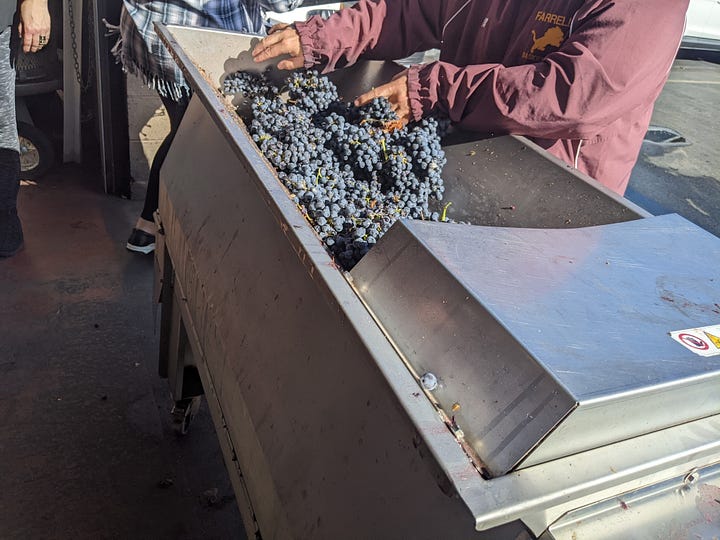
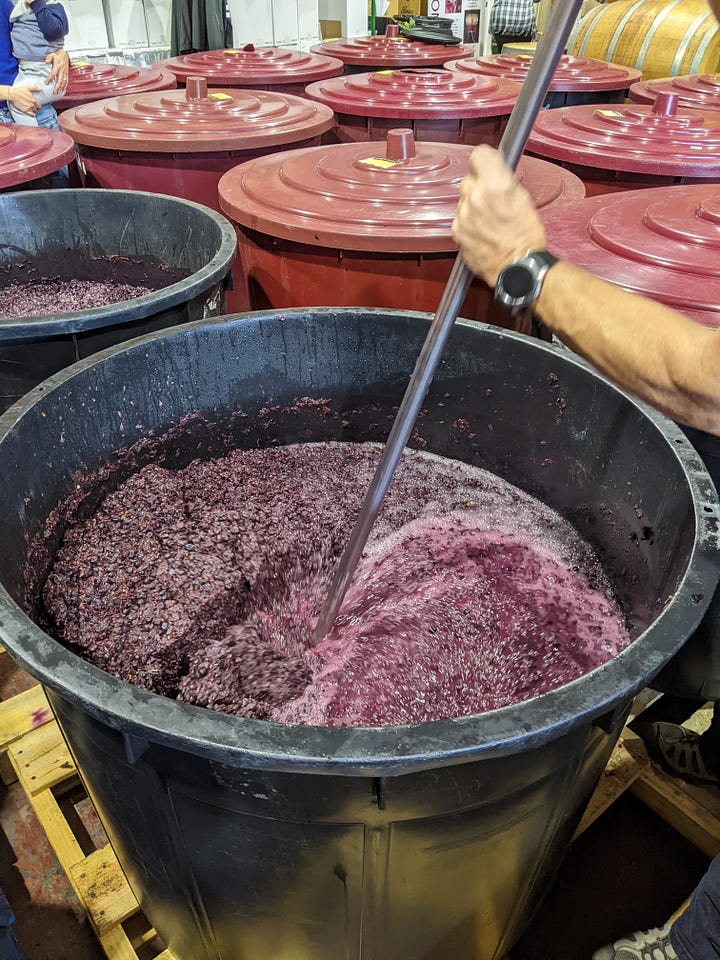

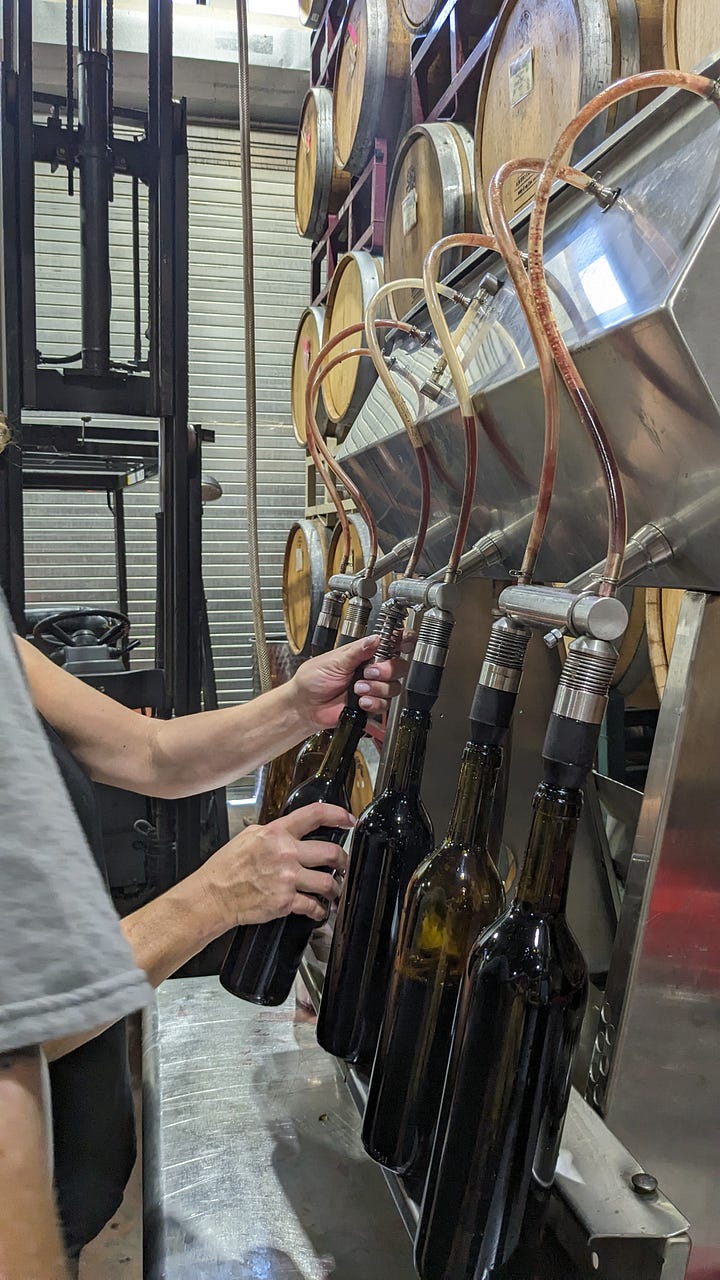





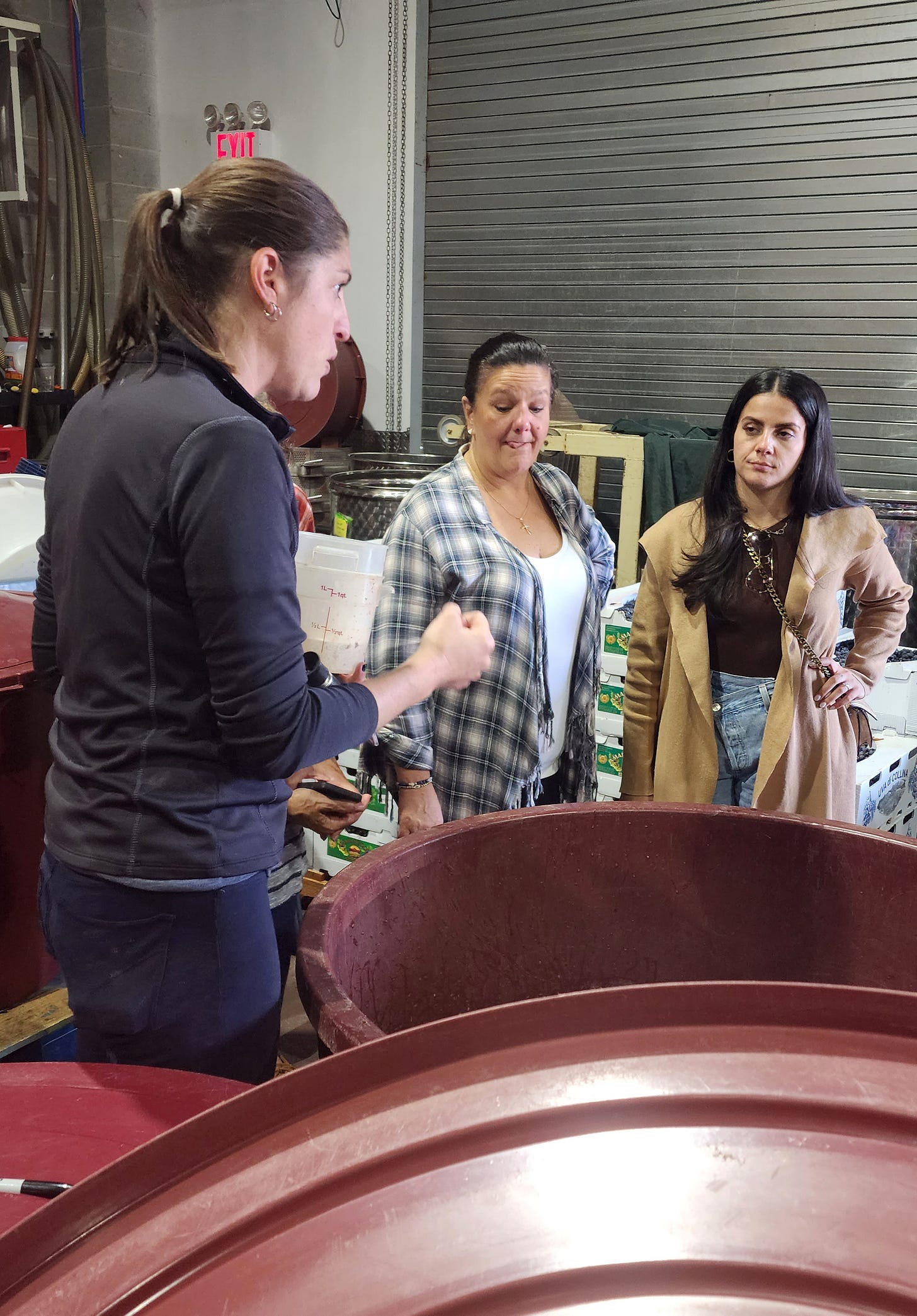
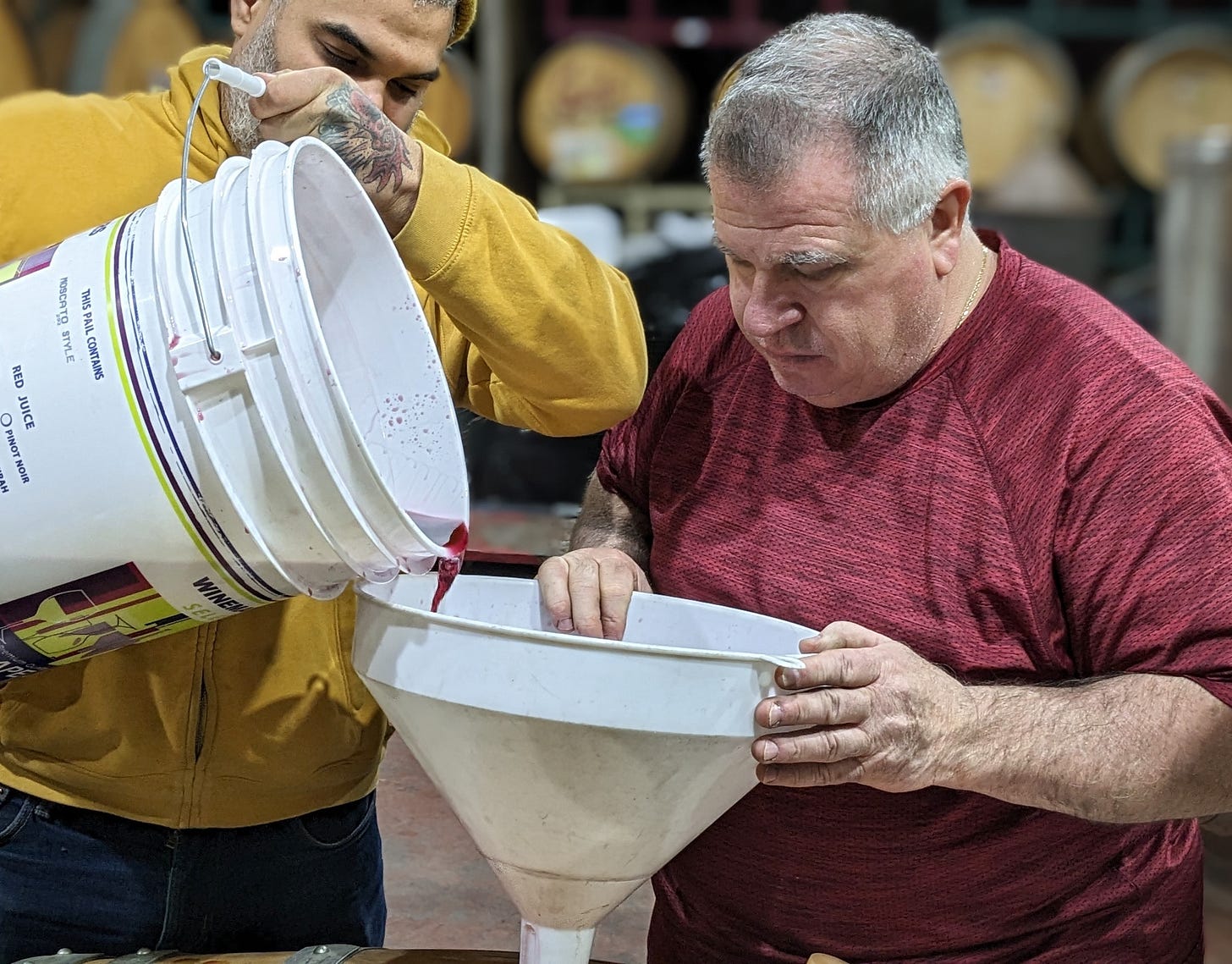
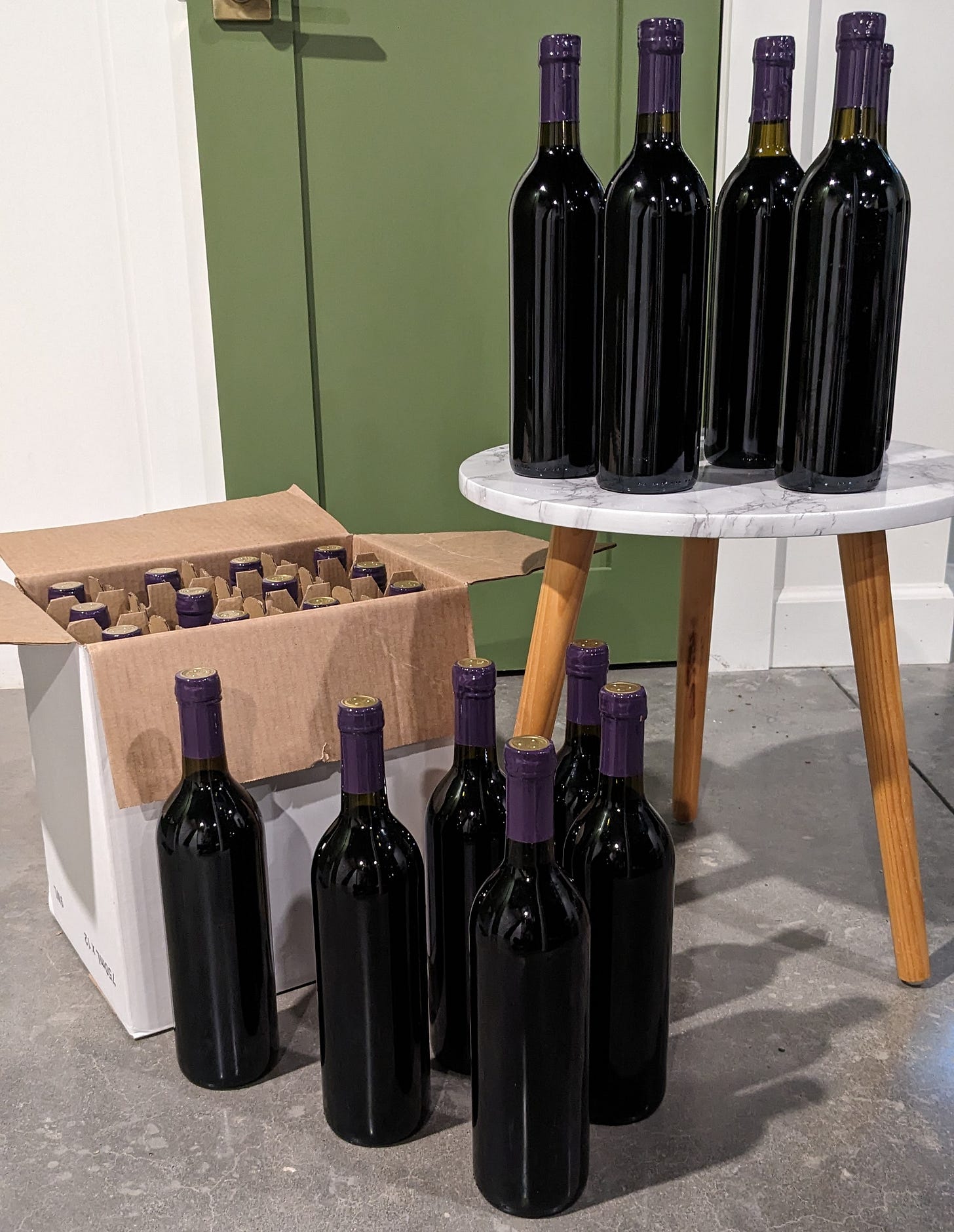
Fascinating. I had no idea that such a place exists in Staten Island!
It's a constant surprise, that borough